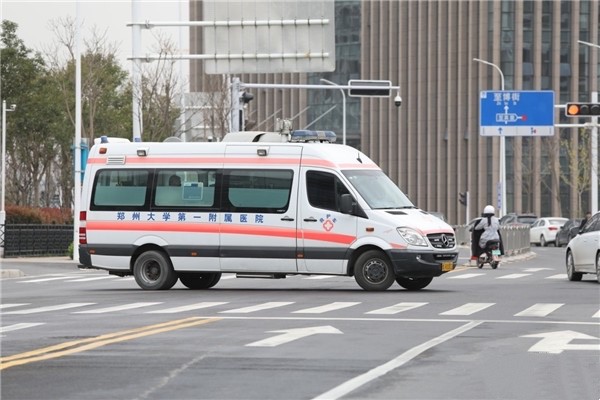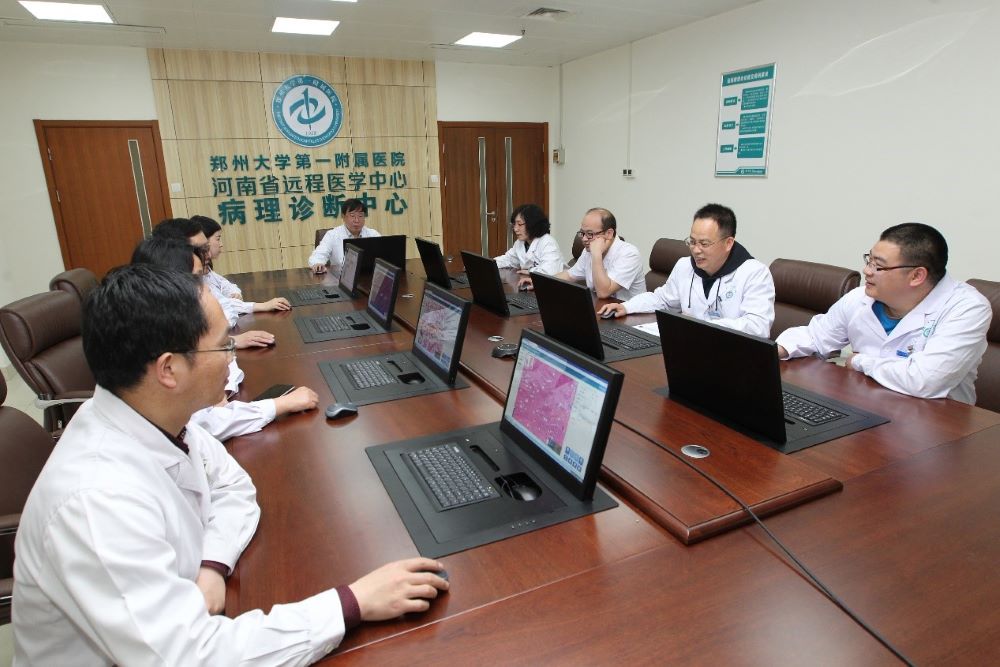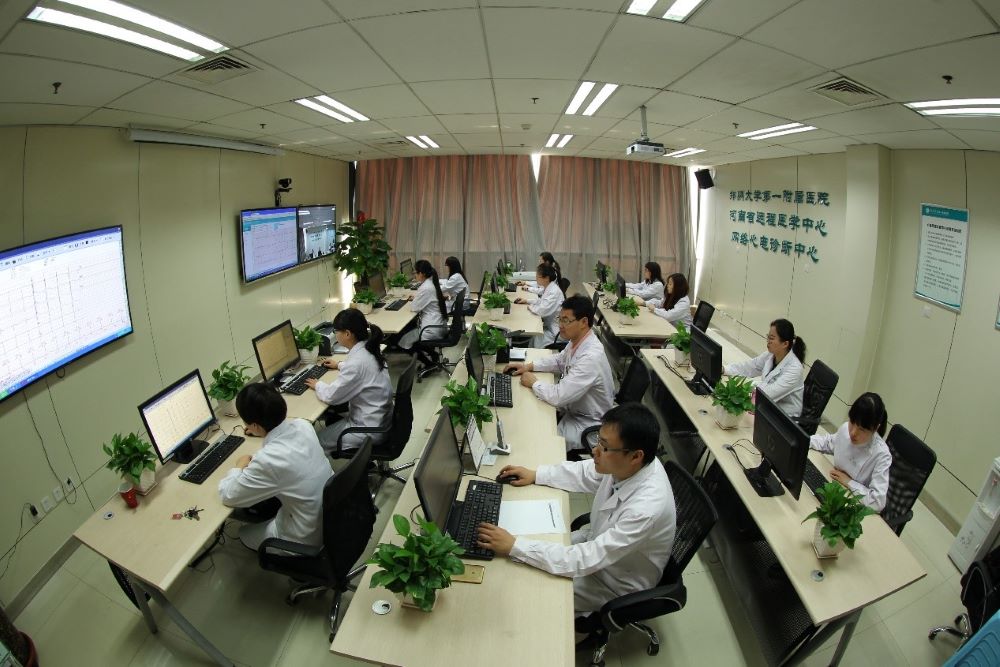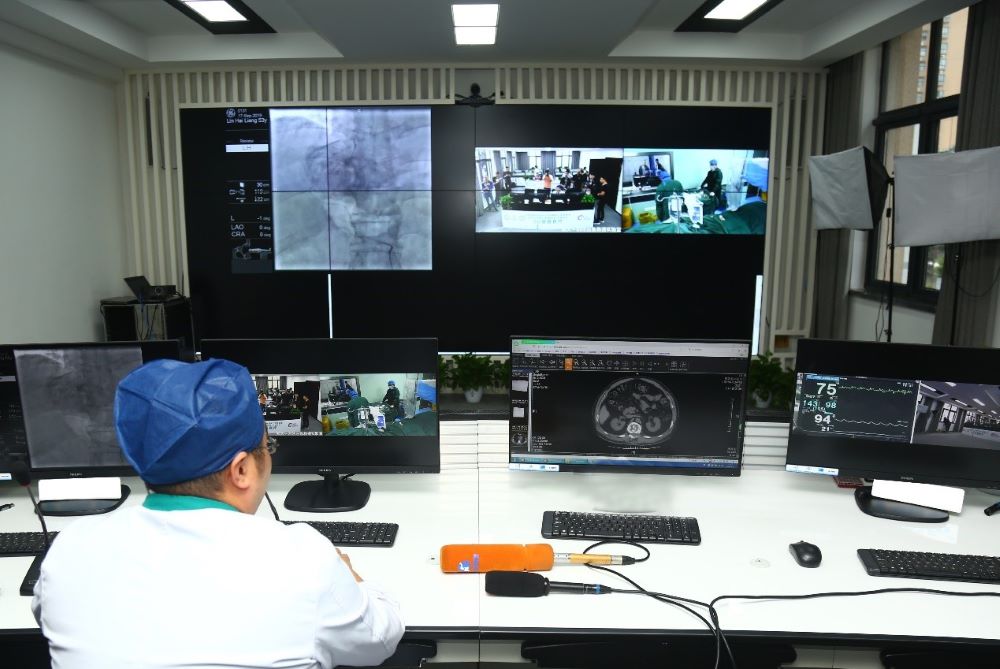The First Affiliated Hospital of Zhengzhou University:Unleashing the Potential of 5G+AI and Providing Medical Services for All
This site uses cookies. By continuing to browse the site you are agreeing to our use of cookies. Read our privacy policy>
![]()
Enterprise products, solutions & services
In today's rapidly advancing technological era, the application of 5G, AI, and big data in the medical industry is becoming increasingly diverse, covering areas such as remote consultation, remote surgery, and emergency response.
Founded in 1928, the First Affiliated Hospital of Zhengzhou University has become one of the largest level-3/grade-A hospitals in China. With five campuses and 12,400 beds, the hospital handles over 9.8 million outpatient visits and performs 460,000 surgeries annually. It has remained steadfast in its commitment to serving society by being people-oriented, patient-centered, and of a high standard of quality. With the goal of building a first-class modern hospital in China, the hospital is dedicated to improving the efficiency, quality, and accessibility of medical services for the general public and institutions.
The hospital has made extensive use of new technologies such as big data, 5G, and AI to digitally transform into a smart hospital capable of handling massive service traffic. Zhao Jie, who is the director of the National Telemedicine Center, as well as the deputy secretary of the party committee of the First Affiliated Hospital of Zhengzhou University and its vice president, said that in recent years, the hospital has been embracing digital transformation, taking smart hospital construction as the core driving force, and vigorously promoting the innovation and upgrade of medical services. This not only enables more efficient, convenient, and user-friendly healthcare service system, but creates new opportunities in service mode transformation.
With the assistance of Huawei and China Unicom, the hospital has built a 5G fixed-mobile converged healthcare private network, achieving an "international-national-provincial-municipal-county-township-village" seven-level telemedicine service system. On this basis, they have further innovated and incubated smart healthcare applications such as 5G pre-hospital first aid, 5G+AI intelligent diagnosis platform, and Net5.5G healthcare IoT. These scenario-specific solutions demonstrate the leading role of digital technology in smart hospital development, enabling the continuous and stable operation of various services and promoting the distribution of high-quality medical resources to grassroots levels.
As a 5G smart ambulance speeds towards the hospital, the onboard doctor conducts examinations such as B-scans and ECG tests on the patient. Simultaneously, the patient's condition, live video images, and examination results are displayed clearly on a large screen in the hospital's emergency center.
"Our guiding principle is to save patients with the fastest response, the most optimal measures, and the most advanced treatment." said Professor Gao Yanxia, director of the Emergency Internal Medicine Department and deputy director of the Emergency Medicine Department of the hospital. A key feature of these 5G smart ambulances is admission upon getting in the ambulance. The ambulances support cloud-based access to all manner of data and medical devices, such as ventilators, monitors, and infusion pumps. This is especially important for patients with serious conditions. Services and functions such as ambulance-mounted EMR, remote consultation, inspection sheets, and inpatient certificates can be provided in the ambulance. Patient information can be shared with the hospital securely and immediately, creating a green channel for one-stop emergency treatment.

5G pre-hospital first aid
To maximize the medical treatment capability, the hospital has built a comprehensive smart service platform for remote first aid and smart interconnection, focusing on five major specialties: chest pain, stroke, trauma, critical maternal, critical children, and newborns. Patients can use the National Telemedicine Center mini-program for one-click calling, and the platform provides the "locate-when-call" function, rapidly coordinating the entire process of calling, emergency dispatch, transportation, admission, triage, and rescue. Notably, the platform supports access by 500 ambulances and 1000 concurrent meetings. Its emergency information services are among the best in the country.
The hospital has built a remote intelligent specialist diagnosis platform based on 5G and AI technologies to make quality medical services more accessible. This platform works at the provincial, city, county, and grassroots levels through a telemedicine center. It consists of three intelligent specialist platforms: pathology diagnosis, remote ECG diagnosis, and remote image diagnosis. The platform currently serves 99 tertiary hospitals and 326 secondary hospitals in Henan Province. With over 10,000 cases of remote pathology diagnosis conducted annually, it has achieved standardized and precise diagnosis and treatment across regions. This has significantly improved specialist diagnosis at the grassroots level.

5G remote pathology diagnosis center

5G remote ECG diagnosis center
The AI-assisted diagnosis system, known as the "AI doctor", is used to assist in diagnosis based on pathological reports, ECG reports, and multi-part 3D image examination results. In imaging and ultrasound scenarios, 5G and AI technologies are fully integrated into the entire remote diagnosis process to improve image shooting, screening, data processing, and analysis. This enables one-stop real-time consultations and quality control for imaging and ultrasound across different hospital areas. AI-assisted diagnosis improves the efficiency of examination report generation, increases the speed and accuracy of screening and diagnosis, enables the implementation of tiered diagnosis and treatment, and elevates the quality of medical services and management.
The hospital uses the high speeds and low latencies of 5G networks to ensure reliable telemedicine. In 2018, the hospital established the National Telemedicine Center, which now covers more than 1000 medical institutions in Henan Province (at provincial, municipal, county, and township levels). Additionally, it has established direct connections with more than 100 medical institutions outside the province, including in Zambia. This has enabled regular remote medical services on a large scale. The center conducts an average of 30,000 remote comprehensive consultations per year, with 400,000 annual remote pathology, ECG, and image diagnosis cases. It has also provided remote continuing education and training for more than 500,000 participants.

5G remote surgery collaboration
The First Affiliated Hospital of Zhengzhou University uses 5G networks to efficiently transmit data, perform remote surgeries for designated medical assistance hospitals outside the province, and provide quality medical services for patients in remote areas. In June 2024, it completed the first case of biopsy of pulmonary nodules in the province using a 5G-based bronchoscopy navigation robot. In August, it successfully treated a patient with endometrial cancer using 5G-based remote robot-assisted radical treatment. In September, it accomplished the first 5G-based remote robotic surgery for colon cancer in Henan province. These are all examples of how remote 5G medical services are breaking geographical barriers to allow quality medical resources to reach more people in more areas, alleviating the inequity of healthcare resources.
In September 2024, the hospital completed and launched its Smart Service Center. This center offers all the hospital's telephone resources and services to both patients and clinical staff. It operates through the unified hotline number 96299 to provide 24/7 manual call services. The center covers comprehensive consultation, critical illness transfer, feedback and complaints, online customer support, three-party/multi-party video calls, simultaneous translation, in-hospital consultation, contact, knowledge base application, and AI quality inspection. It serves as an exclusive channel for connecting patients and the hospital. Using high-bandwidth and low-latency 5G, the platform ensures stable real-time video communication between 96299 and incoming calls, effectively assisting in emergency medical situations.
The First Affiliated Hospital of Zhengzhou University attaches great importance to information security. It has established a private network with 5G for medical data confidentiality and encryption to ensure secure data and fast transmission.
Digital technologies have become a powerful engine for the development of smart hospitals. Zhao Jie stated that in the future, the hospital will continue to deepen digital transformation and promote comprehensive upgrades in healthcare, education, scientific research, and management. This will provide the general public with more convenient, compassionate, and accessible smart healthcare services of a high standard of quality. Together, we aim to create a healthy and better life.